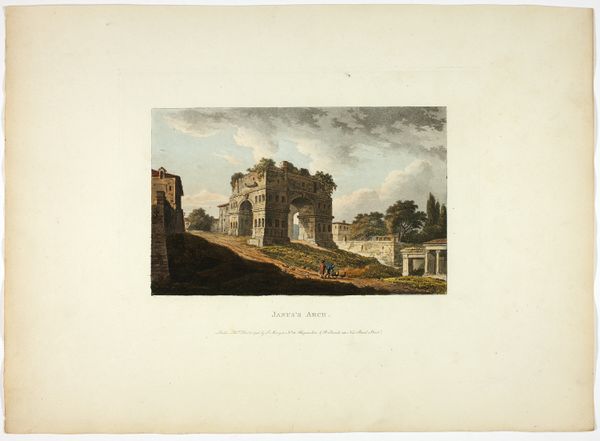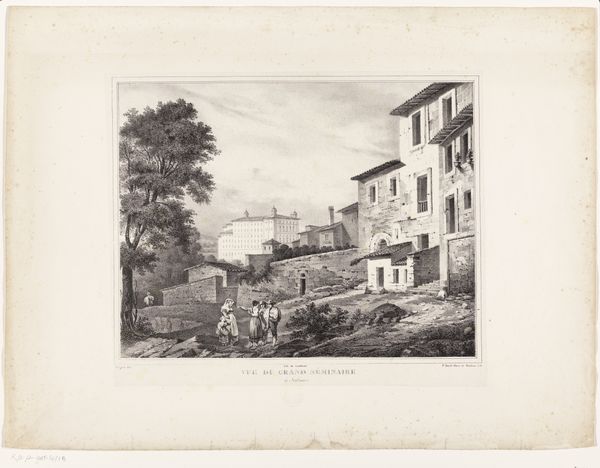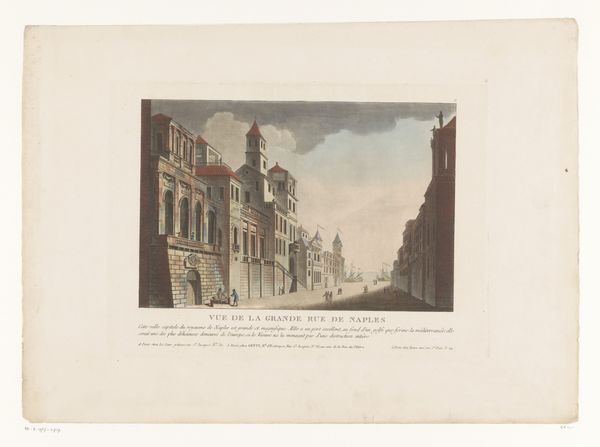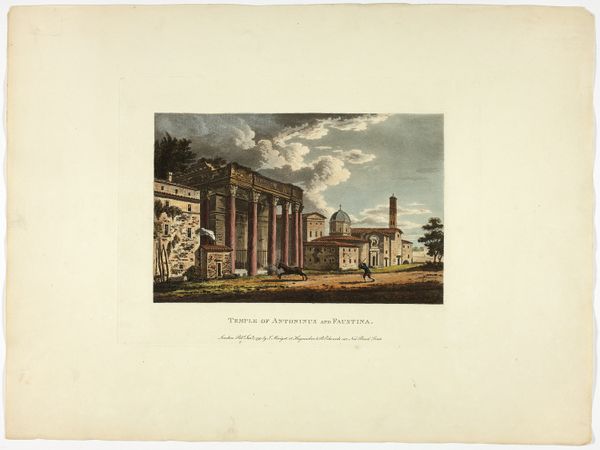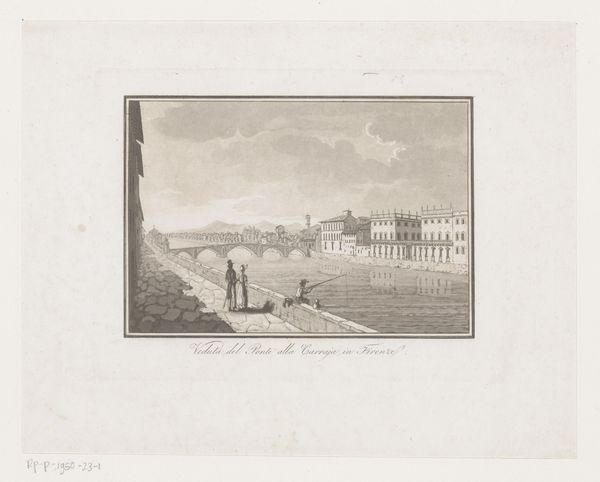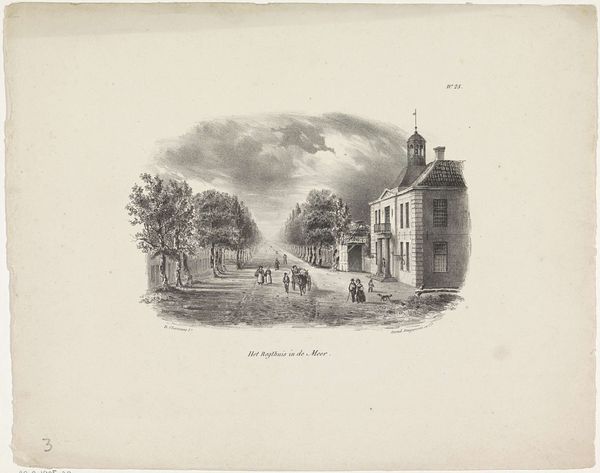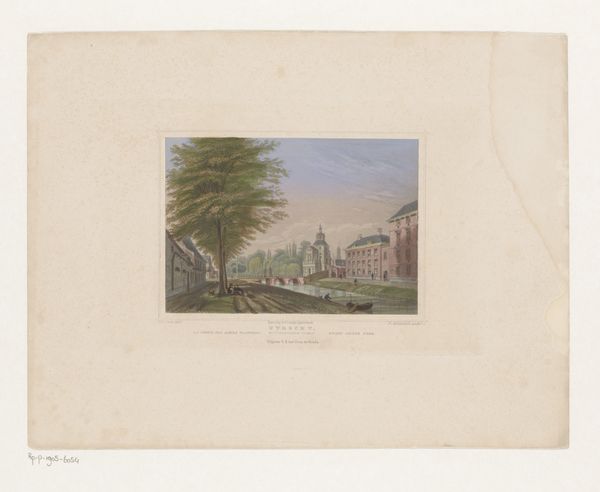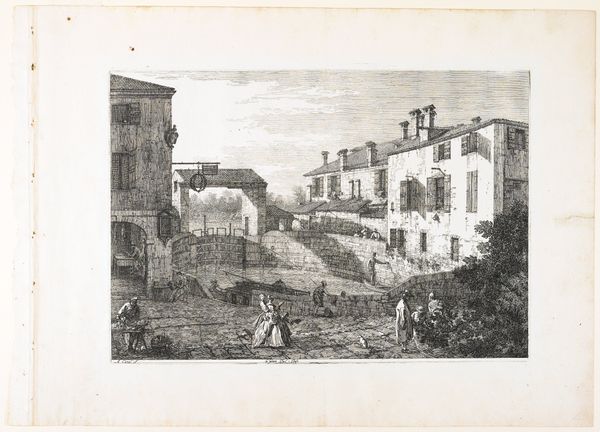
Temple of Vesta, plate nineteen from the Ruins of Rome c. 1796
0:00
0:00
drawing, print, paper, watercolor
#
drawing
#
neoclacissism
# print
#
landscape
#
paper
#
watercolor
#
cityscape
#
history-painting
Dimensions: 330 × 448 mm (sheet)
Copyright: Public Domain
M. Dubourg’s print of the Temple of Vesta, from around the 1820s, shows us how the ancient world was transformed into an object of mass consumption. This wasn’t done with photography, of course, but with labor-intensive printmaking. The print before you is made from etching and aquatint. An etcher covers a plate of metal with a waxy ground, then scratches an image into the ground with a needle, before dipping the plate in acid. The acid bites away at the exposed metal, creating recessed lines that will hold ink. Aquatint is a similar process, but instead of lines, it creates tonal areas. This particular print was then painstakingly hand-colored. Imagine the labor involved in producing hundreds of these! This was all part of a burgeoning tourist industry, where picturesque views became keepsakes. It’s easy to forget the intensive making behind these seemingly simple images, but that labor is part of their story.
Comments
No comments
Be the first to comment and join the conversation on the ultimate creative platform.
